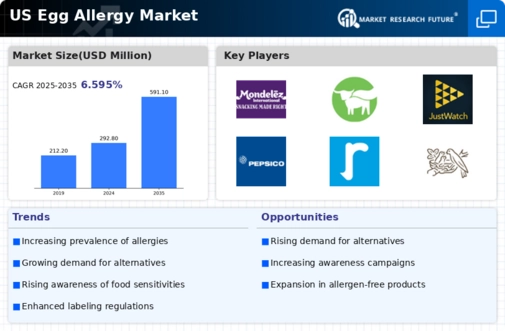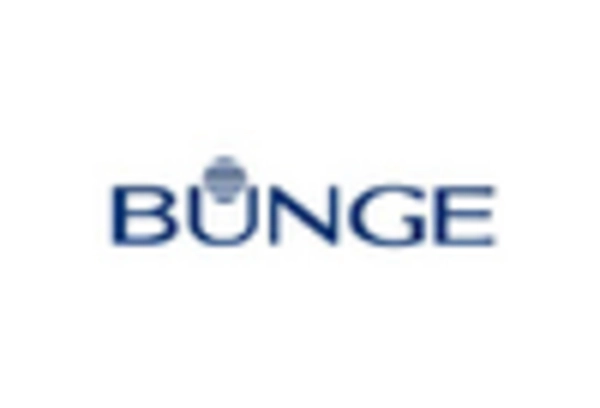Rising Health Consciousness
The growing trend of health consciousness among consumers is impacting the egg allergy market. Many individuals are increasingly aware of the health implications associated with food allergies and intolerances. This awareness has led to a surge in demand for allergen-free products, including those specifically designed for individuals with egg allergies. According to Market Research Future, the health and wellness food sector is expected to grow by approximately 8% annually, indicating a robust market for egg-free alternatives. As consumers prioritize their health and seek out safer food options, the egg allergy market is likely to expand to meet these evolving preferences.
Innovation in Food Technology
Advancements in food technology are playing a crucial role in shaping the egg allergy market. The development of egg substitutes derived from various plant sources, such as aquafaba and flaxseed, indicates a shift towards more inclusive food options. These innovations not only provide alternatives for those with egg allergies but also appeal to a broader audience seeking healthier or vegan choices. The market for egg substitutes is projected to reach approximately $1 billion by 2026, reflecting a growing consumer preference for allergen-free products. As food technology continues to evolve, it is likely that the egg allergy market will benefit from an influx of new products that meet the needs of consumers with dietary restrictions.
Increased Labeling Regulations
The implementation of stricter labeling regulations in the food industry is influencing the egg allergy market. The FDA mandates clear labeling of allergens, including eggs, which helps consumers make informed choices. This regulatory framework not only protects individuals with egg allergies but also encourages manufacturers to create safer products. As a result, the market for egg-free alternatives is expanding, with a notable increase in the availability of allergen-free options in grocery stores. The egg allergy market is likely to see continued growth as consumers become more confident in purchasing products that are clearly labeled and safe for their dietary needs.
Expansion of E-commerce Platforms
The rise of e-commerce platforms is transforming the egg allergy market by providing consumers with greater access to allergen-free products. Online shopping has become increasingly popular, allowing individuals with egg allergies to easily find and purchase specialized products that may not be available in local stores. This shift towards online retail is supported by a growing number of brands that offer direct-to-consumer sales, enhancing convenience for consumers. As e-commerce continues to expand, it is anticipated that the egg allergy market will benefit from increased visibility and accessibility, ultimately leading to higher sales and a broader range of product offerings.
Growing Awareness of Food Allergies
The increasing awareness surrounding food allergies, particularly among parents and caregivers, appears to be a significant driver for the egg allergy market. Educational campaigns and resources provided by healthcare professionals have led to heightened vigilance regarding food ingredients. This awareness is reflected in the rising number of diagnosed cases of egg allergies, which, according to the CDC, affects approximately 2% of children in the US. As more individuals recognize the potential severity of egg allergies, the demand for egg-free alternatives and products specifically designed for those with egg allergies is likely to grow. Consequently, this trend may lead to an expansion of the egg allergy market, as manufacturers respond to consumer needs by developing innovative solutions that cater to this demographic.

















Leave a Comment